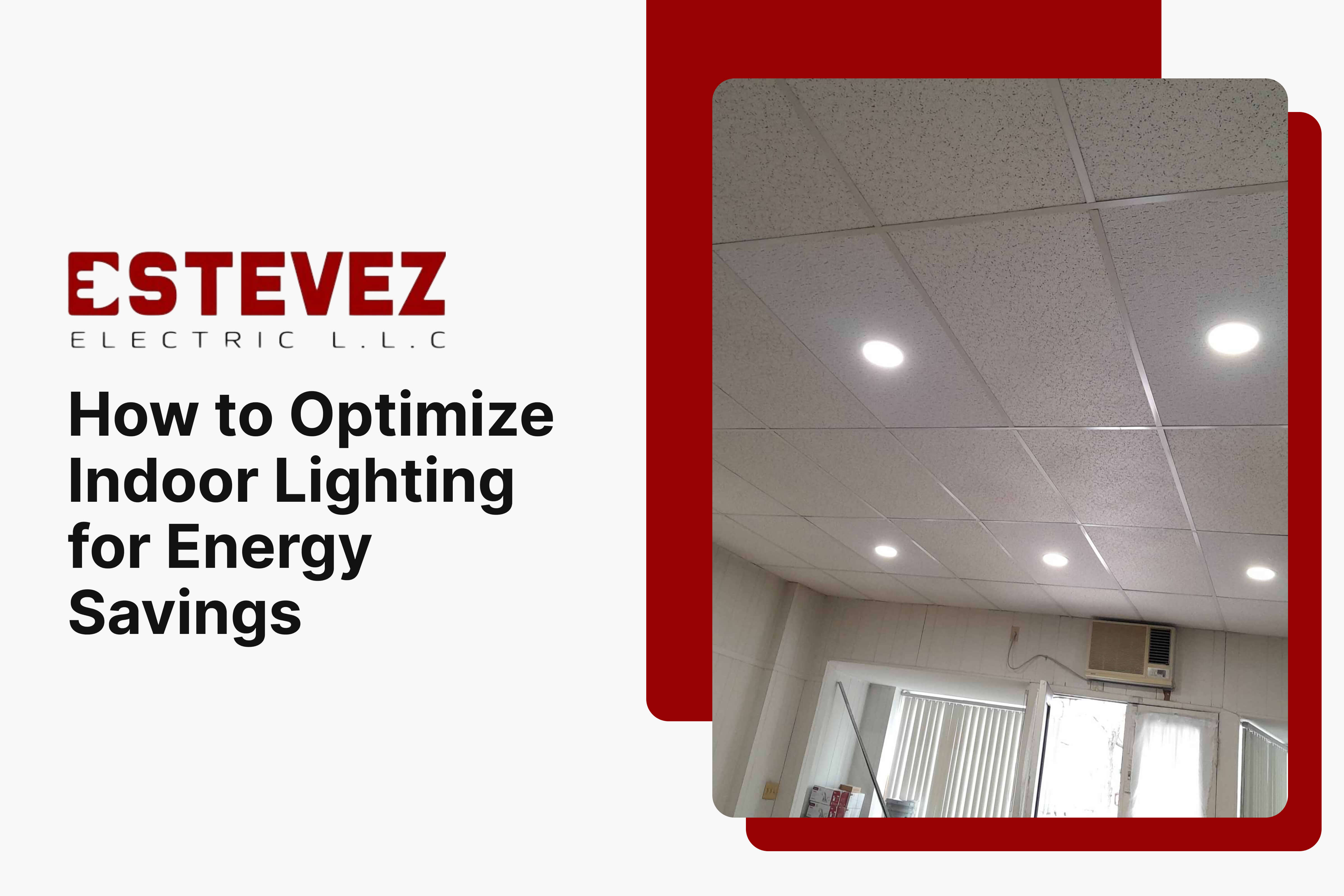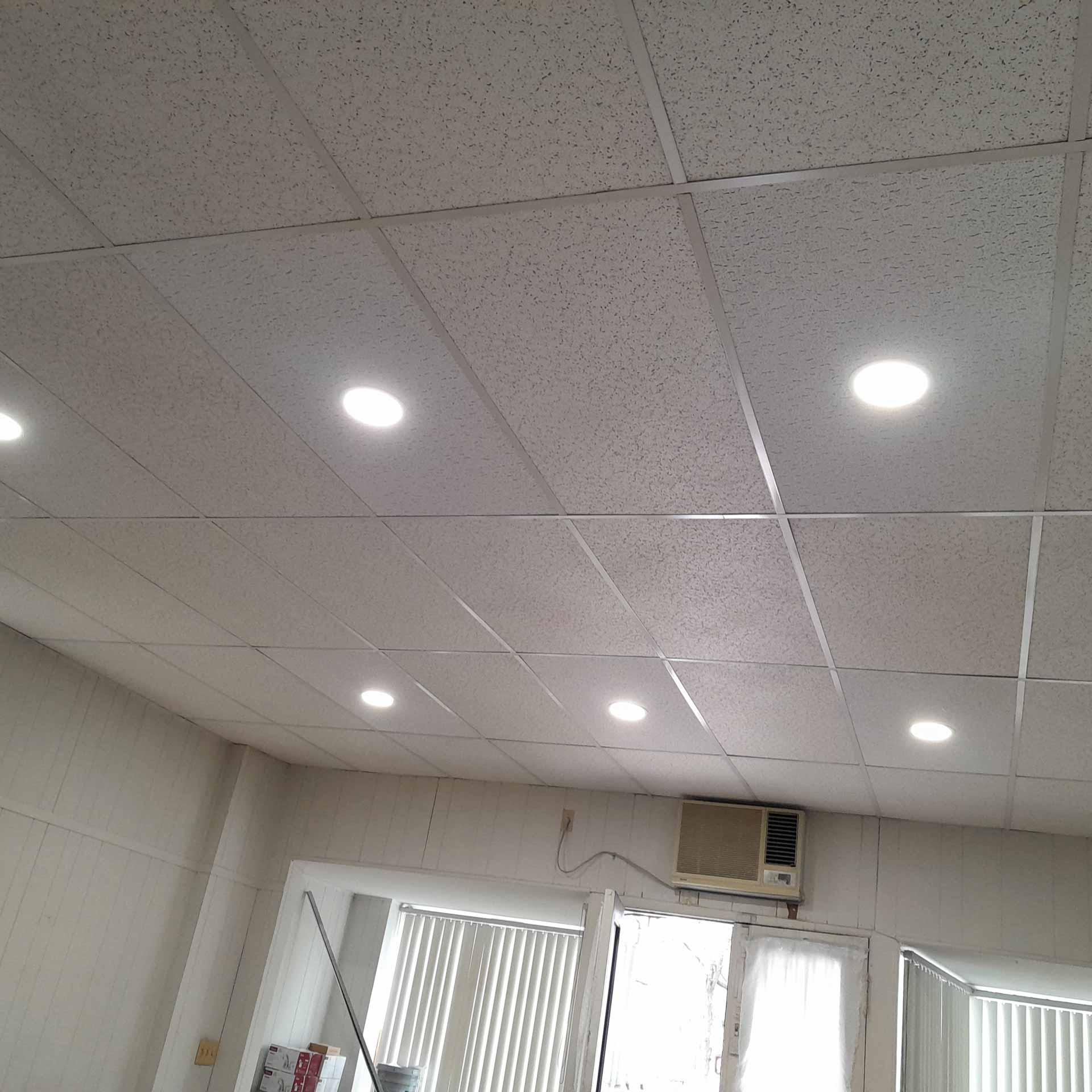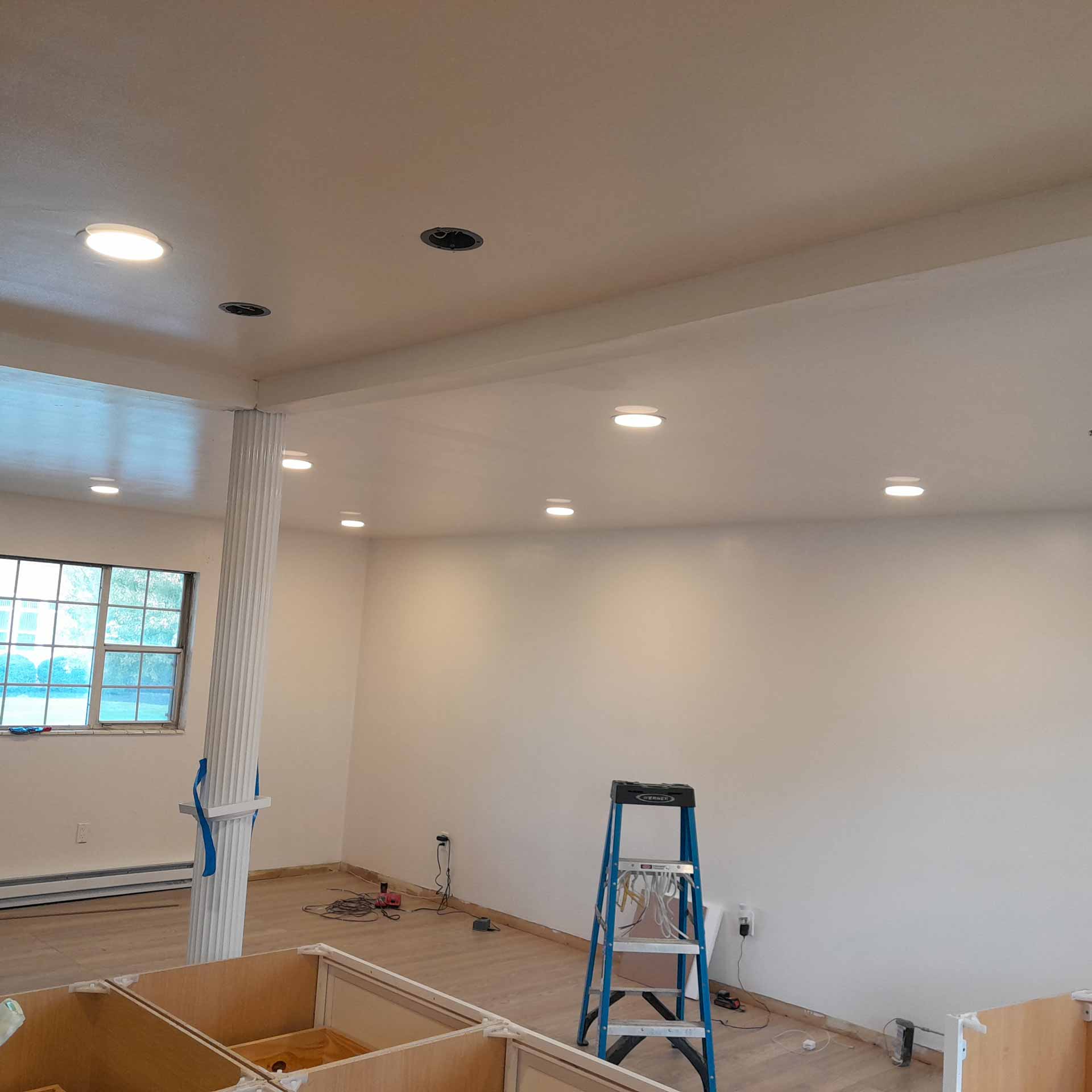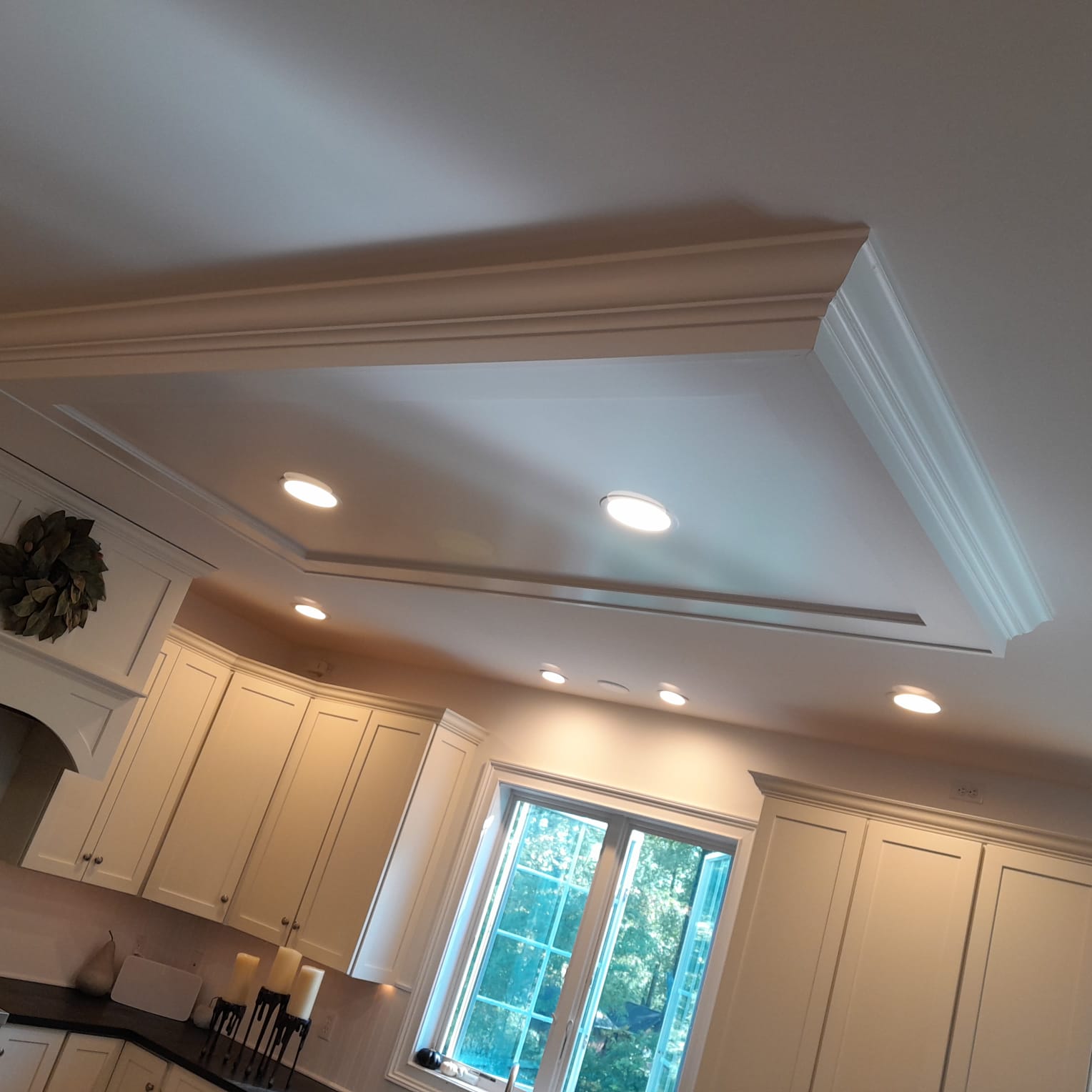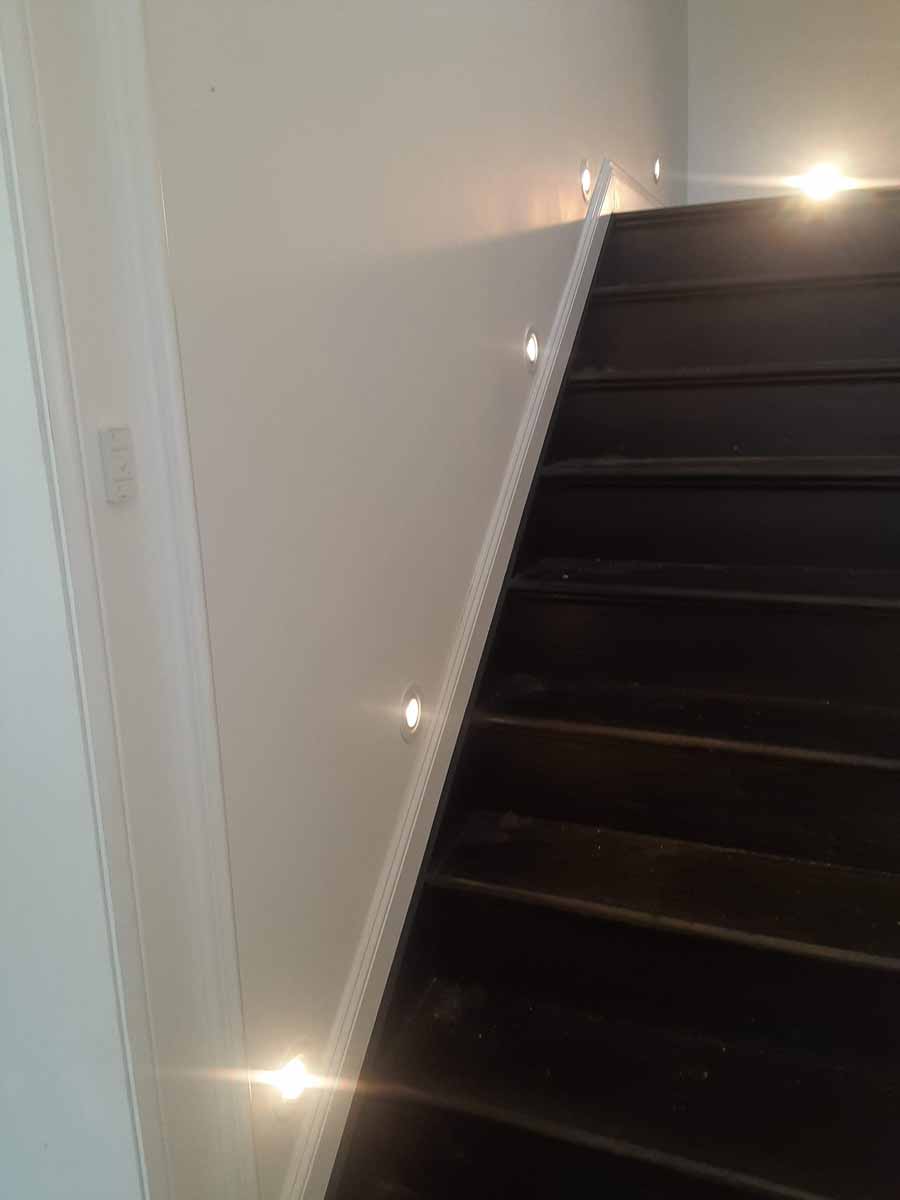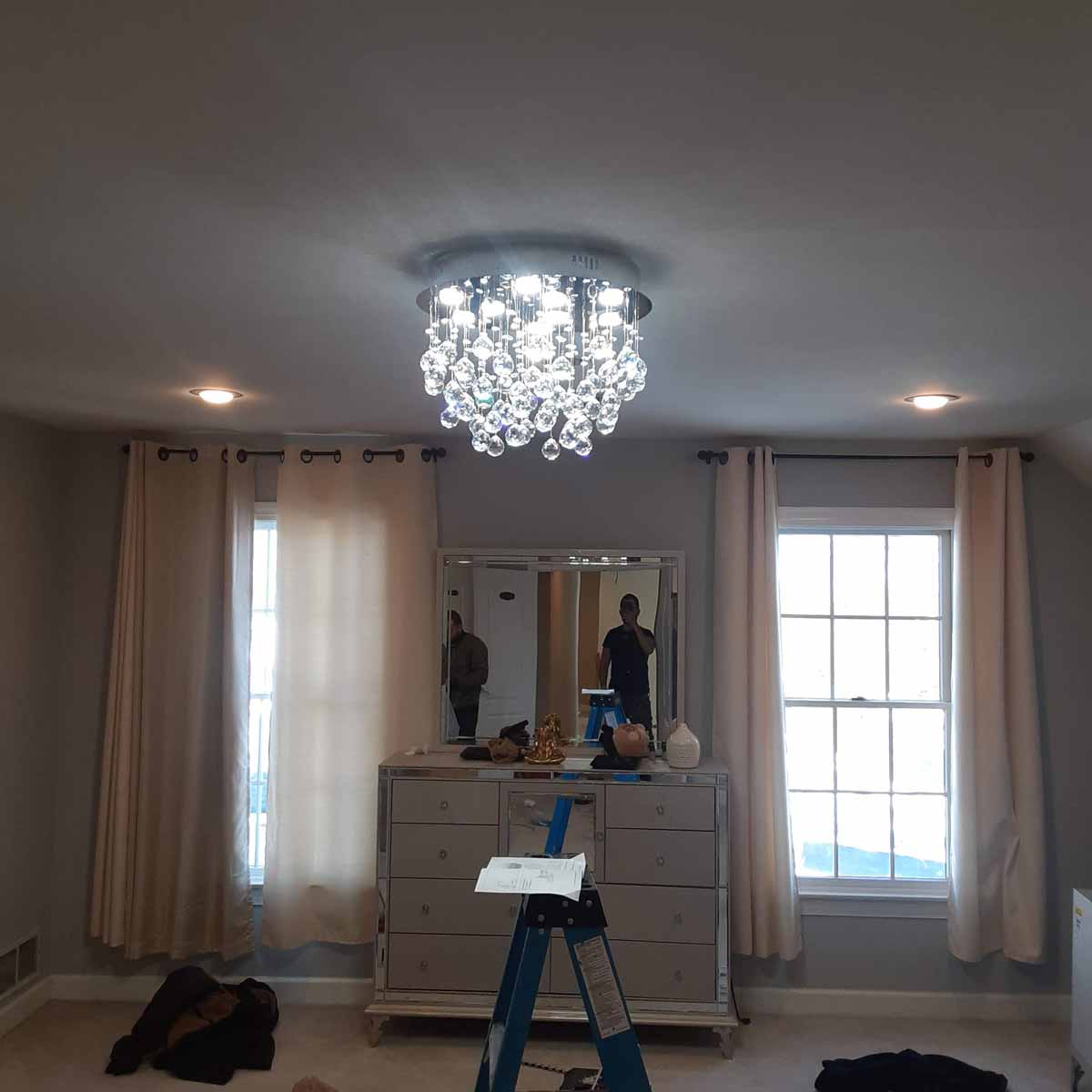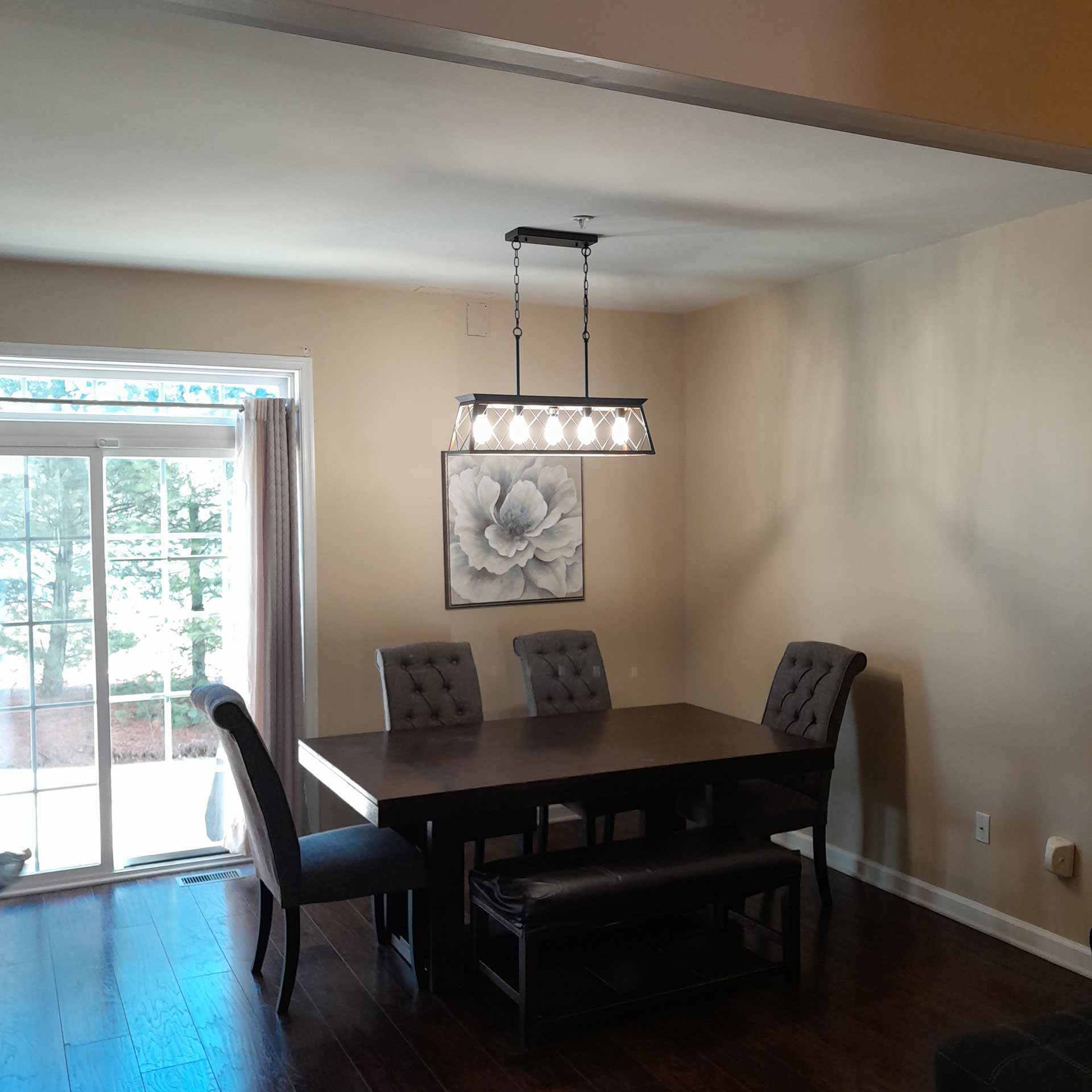Energy-Saving Lighting Essentials
- LED lighting uses 75-90% less energy than traditional incandescent bulbs
- LED bulbs last up to 25,000+ hours, 25 times longer than incandescents
- Smart lighting systems offer convenience and additional energy savings
- Maximizing natural light is a free way to brighten your home
- Proper installation by professionals ensures optimal performance and safety
- Strategic fixture placement can reduce energy consumption by up to 40%
- Regular maintenance maintains peak efficiency and extends system lifespan
- Room-specific optimization strategies maximize both comfort and savings
- Smart controls can reduce lighting energy use by an additional 25-60%
- Professional assessment identifies the greatest opportunities for improvement
Introduction to Energy-Efficient Indoor Lighting
Indoor lighting creates comfortable, functional living spaces while affecting your energy consumption and utility bills. Lighting makes up about 10% of the average home’s energy usage, so making smart lighting choices can save you money over time. Modern lighting technology has changed a lot in recent years, giving homeowners many ways to save energy without sacrificing light quality or appearance. Using energy-efficient lighting is one of the easiest ways for homeowners to cut down on energy use.
Good lighting choices reduce your carbon footprint and can make your home look better, work better, and cost less to run. By using energy-efficient lighting, you can cut your lighting energy use by up to 75% while keeping or even improving your home’s light quality. Energy-efficient lights often show colors better, make less heat, and give you more control options than old-style lighting, creating more comfortable living spaces while lowering your bills.
In this guide, we’ll explore practical ways to optimize your indoor lighting to save energy. From understanding the benefits of LED lighting installations to using smart lighting controls and making the most of natural light, we’ll give you useful tips to help create an energy-efficient lighting plan for your home. Whether you’re building a new home, fixing up an old one, or just trying to lower your energy bills, these lighting strategies will help you save energy while creating prettier, more functional, and more comfortable living spaces.
Understanding Energy Consumption in Home Lighting
Before we talk about saving energy, it’s important to know how lighting affects your home’s energy use. In the average American home, lighting uses about 10-15% of all electricity. This might seem small compared to heating and cooling (which uses about 43% of home energy), but lighting is an area where simple changes can save a lot of energy without big lifestyle changes or expensive upgrades. Knowing how much energy your lights use gives you a starting point for making improvements.
Old-fashioned incandescent bulbs turn only about 10% of their energy into light, wasting the other 90% as heat. This waste means higher energy bills and more pollution. Modern LED lights, on the other hand, turn much more energy into light, greatly reducing waste. How much energy your lights use depends on several things:
- What kind of bulbs you have and their wattage ratings
- How you use them throughout the day and across seasons
- Where they’re placed and how efficiently light is distributed
- What control systems you use to manage lighting schedules
- How much natural light you get and utilize effectively
Each of these areas gives you a chance to save energy in your home lighting.
According to our analysis at Estevez Electric LLC, homeowners who improve their lighting can reduce their lighting energy use by up to 75%. This means big savings on your bills and less harm to the environment. Understanding your current lighting energy use is the first step toward improvement. Professional lighting assessments can find inefficient areas and give you a starting point for measuring improvements as you make changes. These assessments look at your current lighting technology, usage patterns, control systems, and natural light opportunities, giving you a complete picture of your current energy use and how you can improve it.
The LED Revolution: Making the Switch for Maximum Savings
LED (Light Emitting Diode) technology is the biggest advancement in lighting efficiency in recent decades. Switching to LED lighting is probably the single most effective step homeowners can take to save energy on lighting. LEDs use 75-90% less energy than incandescent bulbs and 25-30% less than fluorescent lighting, making them clearly the best choice for saving energy. LEDs are so efficient because they make light in a completely different way, using semiconductor technology that produces very little heat while turning electricity directly into light.
Besides saving energy, LEDs have several other big advantages:
- Exceptional longevity: Quality LED bulbs work for 25,000 to 50,000 hours, compared to just 1,000 hours for incandescent bulbs
- Reduced heat production: LEDs produce very little heat, which helps lower cooling costs in summer
- Directional lighting: They send light in a specific direction, reducing the need for reflectors that can trap light
- Superior light quality: Modern LEDs provide excellent color rendering that makes things in your home look their best
- Instant illumination: LEDs reach full brightness immediately without warm-up time
- Dimming compatibility: Many LEDs work seamlessly with dimmer switches for additional energy savings
Real-World Savings Example
According to our cost comparison analysis, replacing just 10 frequently used incandescent bulbs with LEDs can save the average homeowner about $65 per year on energy. Over the life of the LED bulbs, this adds up to savings of $650 or more, far exceeding the initial cost of the more expensive LED bulbs.
You’ll typically get your money back within 6 months to 2 years, making LED lighting a smart financial choice. These savings get even better when you consider the lower cooling costs from LEDs’ lower heat output and the reduced maintenance costs from their longer life.
Smart Lighting Controls: Automation for Enhanced Efficiency
While switching to LED technology saves a lot of energy, using smart lighting controls can save even more. Smart lighting systems give you precise control over when, where, and how much light is used in your home, eliminating waste and making life more convenient. These systems range from simple motion sensors to sophisticated whole-home systems that you can control with your smartphone. By making sure lights are only on when needed and at the right brightness, smart controls can cut lighting energy use by an additional 25-60% beyond what you save by using efficient bulbs.
Types of Smart Lighting Controls
Smart lighting controls offer many features that help save energy:
- Motion sensors and occupancy sensors: Turn lights on when someone enters a room and off when they leave, preventing lights from being left on unnecessarily
- Daylight sensors: Adjust artificial lighting based on available natural light, automatically dimming or brightening as needed
- Smart switches and dimmers: Let you control lighting remotely and set custom dimming levels for energy savings
- Smart bulbs: Can be controlled individually through smartphone apps with scheduling and color temperature adjustment
- Whole-home automation systems: Connect lighting with other home systems for complete energy management
- Geofencing technology: Automatically adjusts lighting based on whether you’re home or away
- Voice control integration: Allows hands-free operation and easy scheduling through smart assistants
Maximizing Smart Control Efficiency
To get the most energy savings from smart lighting controls:
- Create separate lighting zones that can be controlled independently based on usage patterns
- Customize schedules based on time of day and when rooms are used most frequently
- Implement focused task lighting for specific activities while reducing ambient lighting
- Connect lighting controls with other home systems like HVAC and security for comprehensive automation
- Use adaptive scheduling that learns from your usage patterns and adjusts automatically
- Set up vacation modes that simulate occupancy while minimizing energy use
According to research, using smart lighting controls can reduce lighting energy use by an additional 25-60% beyond the savings from switching to LED technology. This makes smart controls an essential part of any complete lighting energy-saving plan.
Leveraging Natural Light: The Ultimate Energy-Free Illumination
One of the most overlooked ways to save lighting energy is to make better use of natural light. Daylight is free, energy-efficient, and provides better color rendering and psychological benefits compared to artificial lighting. Maximizing natural light can greatly reduce your need for electric lighting during the day, leading to big energy savings and creating more pleasant living spaces. Studies show that natural light improves mood, productivity, and overall well-being, making it not just an energy-saving strategy but also a way to improve your quality of life.
Natural Light Optimization Strategies
To make the most of natural light in your home:
- Keep windows clean: Dirty windows can reduce light transmission by up to 30%
- Use light-colored, reflective interior surfaces: Light walls, ceilings, and floors bounce natural light deeper into rooms
- Install architectural elements: Light shelves reflect daylight into interior spaces more effectively
- Add skylights or solar tubes: Bring natural light into interior rooms without exterior walls
- Choose appropriate window treatments: Light-filtering options provide privacy while allowing natural light to enter
- Strategic mirror placement: Reflects natural light into darker areas of rooms
- Trim exterior vegetation: Ensure trees and shrubs don’t unnecessarily block windows
- Optimize window placement and sizing: For new construction or major renovations, consider daylight maximization
Integrating Natural and Artificial Light
The best lighting strategy combines natural and artificial light in a complementary way:
- Install daylight sensors that automatically adjust artificial lighting based on available natural light
- Create layered lighting plans with primary (natural), secondary (ambient), and tertiary (task) lighting layers
- Position workspaces near windows to reduce the need for task lighting during daylight hours
- Use light-colored furnishings and decor to amplify natural light throughout spaces
- Consider seasonal changes in daylight availability when planning artificial lighting needs
By using these strategies, many homeowners can reduce daytime artificial lighting needs by 30-60%, resulting in significant energy savings. This integrated approach ensures optimal lighting conditions throughout the day while minimizing energy use through the intelligent interplay between natural and artificial light sources.
Strategic Fixture Placement and Selection
The strategic placement and selection of light fixtures play a crucial role in saving energy. Even with energy-efficient bulbs, poor fixture placement or inappropriate fixture selection can waste energy and provide inadequate lighting. Thoughtful consideration of fixture type, placement, and distribution can significantly enhance the effectiveness of your lighting while minimizing energy use. Proper fixture selection ensures that light is directed where it’s needed most, eliminating wasted illumination and allowing for lower overall light levels while maintaining visual comfort and functionality in each space.
Principles of Strategic Fixture Placement
To maximize energy efficiency through strategic fixture placement:
- Use task lighting: Place focused lighting directly where activities occur, allowing for lower ambient light levels throughout the rest of the space
- Consider room dimensions: Account for ceiling height and room size to ensure adequate coverage without over-lighting
- Layer your lighting: Combine ambient, task, and accent lighting for flexibility and efficiency
- Minimize shadows: Place fixtures to eliminate shadows in work areas and high-traffic zones
- Use reflective surfaces: Amplify light and reduce fixture needs through strategic use of mirrors and light-colored surfaces
- Coordinate with natural light: Position artificial lighting to complement rather than compete with daylight
- Create lighting zones: Design areas that can be controlled independently based on specific activities
Selecting Energy-Efficient Fixtures
The right fixture can enhance the efficiency of even the most energy-efficient bulbs:
- High Light Output Ratio (LOR): Choose fixtures that deliver more of the light produced by the bulb to the space
- Appropriate reflector designs: Select fixtures that direct light where needed, reducing wasted illumination
- Proper distribution patterns: Match fixture light distribution to the space’s specific needs
- LED-optimized designs: Look for fixtures designed specifically for LEDs to optimize performance and lifespan
- Integrated LED fixtures: Often offer better efficiency than retrofit solutions
- Appropriate environmental ratings: Ensure fixtures have correct IP ratings for specific environments
- Advanced features: Consider fixtures with adjustable light direction, integrated sensors, and multi-level capabilities
Room-by-Room Optimization Strategies
Different rooms have different lighting needs based on their function, when they’re used, and how much natural light they get. Optimizing lighting energy efficiency requires different approaches for each space in your home. By understanding the specific needs of each room, you can implement targeted strategies that maximize energy savings while ensuring adequate illumination for the activities that take place in each space.
Kitchen Lighting Optimization
Kitchens typically need bright, task-oriented lighting for food preparation and cooking:
- Under-cabinet LED lighting: Provides focused task lighting without illuminating the entire room
- Pendant lights over islands: Offer concentrated light where needed for food preparation and dining
- Dimmable overhead lighting: Allows adjustment based on activities from cooking to entertaining
- Occupancy sensors: Ensure lights aren’t left on in this frequently visited space
- Daylight-balanced LEDs: Improve visibility for food preparation and safety
- Separate lighting zones: Create independent control for work areas, dining spaces, and general illumination
Living Room and Family Areas
Living spaces benefit from flexible, layered lighting approaches:
- Multiple light sources: Combine overhead, table, and floor lamps for versatility
- Dimmable systems: Allow adjustment from bright task lighting to soft ambient lighting
- Accent lighting: Highlight artwork and architectural features efficiently
- Natural light maximization: Position seating to take advantage of windows during daytime
- Smart controls: Program different lighting scenes for various activities
Bedroom Lighting Strategies
Bedrooms require careful balance between functionality and comfort:
- Bedside task lighting: Focused reading lights reduce the need for overhead lighting
- Closet lighting: Motion-activated LED strips provide efficient illumination only when needed
- Warm color temperatures: Use 2700K-3000K LEDs to promote relaxation
- Blackout-friendly fixtures: Design lighting that can be completely eliminated for sleep
- Dawn simulation: Smart bulbs can gradually increase brightness to assist with natural wake cycles
Bathroom Lighting Considerations
Bathrooms present unique challenges due to moisture and specific lighting needs:
- Vanity lighting: Even illumination for grooming tasks without shadows
- Moisture-rated fixtures: Ensure safety and longevity in humid conditions
- Occupancy sensors: Especially useful for guest bathrooms and powder rooms
- Night lighting: Motion-activated low-level lighting for nighttime navigation
- Natural light enhancement: Maximize window light while maintaining privacy
Home Office and Workspace Lighting
Work areas require high-quality lighting for productivity and eye comfort:
- Task-specific illumination: Provide adequate light for reading, computer work, and detailed tasks
- Glare reduction: Position lights to minimize screen glare and eye strain
- Adjustable lighting: Allow changes throughout the day to match natural light conditions
- Circadian lighting: Use tunable white LEDs to support natural daily rhythms
- Energy-efficient monitors: Consider display brightness settings as part of overall lighting strategy
Advanced Energy-Saving Technologies
Beyond basic LED conversion and smart controls, several advanced technologies can further enhance your lighting energy efficiency. These cutting-edge solutions represent the next generation of energy-saving lighting technologies that can provide additional savings and functionality for forward-thinking homeowners.
Tunable White and Circadian Lighting
Advanced LED systems that adjust color temperature throughout the day:
- Circadian rhythm support: Automatically adjust from cool daylight (5000K+) in morning to warm light (2700K) in evening
- Energy optimization: Reduce overall light levels needed by providing the most effective color temperature for each time of day
- Health benefits: Support natural sleep cycles and improve overall well-being
- Productivity enhancement: Optimize alertness during work hours and relaxation during evening hours
- Seasonal adjustment: Compensate for shorter daylight hours in winter months
Human-Centric Lighting Systems
Lighting systems designed around human needs and biological responses:
- Biologically effective lighting: Optimizes both visual and non-visual effects of light
- Personalized control: Adapts to individual preferences and schedules
- Integration with health monitoring: Connects with wearable devices to optimize lighting based on sleep and activity patterns
- Therapeutic applications: Supports treatment of seasonal affective disorder and sleep disorders
Wireless and Battery-Powered Solutions
Emerging technologies that reduce installation costs while providing flexibility:
- Solar-powered indoor lights: Use small photovoltaic panels to charge battery-powered LED fixtures
- Kinetic energy harvesting: Generate power from motion and vibration for self-powered switches and sensors
- Long-life battery systems: Advanced battery technology providing years of operation between replacements
- Wireless power transmission: Emerging technology for powering lights without wired connections
Future Technology Spotlight
Li-Fi (Light Fidelity) technology is emerging as a way to provide both illumination and high-speed data transmission through LED lights. While still in early development for residential applications, this technology could revolutionize how we think about lighting infrastructure, potentially providing internet connectivity through lighting fixtures while maintaining energy efficiency.
Cost-Benefit Analysis and Return on Investment
Understanding the financial implications of lighting optimization helps homeowners make informed decisions about their investments. A comprehensive cost-benefit analysis considers not just initial costs and energy savings, but also maintenance expenses, replacement frequency, and additional benefits like improved comfort and productivity.
Initial Investment Breakdown
Typical Costs for Whole-Home LED Conversion:
- Standard LED bulbs: $5-15 per bulb (premium bulbs $15-25)
- Smart LED bulbs: $15-50 per bulb depending on features
- Smart switches and dimmers: $25-100 per switch
- Motion sensors: $20-60 per sensor
- Professional installation: $75-150 per hour for complex systems
- Whole-home automation hub: $100-500 depending on capabilities
Long-Term Savings Calculations
The return on investment for lighting optimization typically includes:
- Energy cost savings: 60-75% reduction in lighting electricity costs
- Bulb replacement savings: LEDs last 25 times longer than incandescents
- Cooling cost reduction: Less heat generation reduces air conditioning needs
- Maintenance labor savings: Fewer bulb changes and system maintenance requirements
- Productivity improvements: Better lighting quality can improve work efficiency and reduce eye strain
Real-World ROI Example
A typical 2,500 sq ft home with comprehensive LED and smart lighting upgrades:
- Initial investment: $1,200-2,000
- Annual energy savings: $200-350
- Payback period: 3.5-6 years
- 20-year net savings: $2,500-5,000
Additional Financial Benefits
Beyond direct energy savings, lighting optimization can provide:
- Increased home value: Energy-efficient lighting is attractive to potential buyers
- Utility rebates: Many utilities offer rebates for LED upgrades and smart lighting systems
- Tax incentives: Some energy-efficient improvements may qualify for tax credits
- Insurance discounts: Some insurers offer discounts for smart home safety features
- Reduced fire risk: LED lights generate less heat, potentially reducing fire insurance costs
Maintenance and Monitoring for Sustained Efficiency
Implementing energy-efficient lighting is just the first step. Proper maintenance and ongoing monitoring are essential to ensure your lighting system continues to deliver optimal energy savings over time. Regular upkeep and performance tracking help identify issues early, maintain peak efficiency, and maximize the lifespan of your lighting components, ensuring you continue to get the energy-saving benefits of your investment.
Regular Maintenance Schedule
Establishing a routine maintenance schedule helps maintain optimal performance:
| Maintenance Task | Frequency | Impact on Efficiency | DIY or Professional |
|---|---|---|---|
| Clean fixtures and bulbs | Every 3-6 months | High | DIY |
| Check electrical connections | Annually | Medium | Professional |
| Replace diffusers | As needed (3-5 years) | Medium | DIY |
| Verify sensor operation | Every 6 months | High | DIY/Professional |
| Update control programming | Seasonally | High | DIY/Professional |
| Inspect outdoor fixtures | Seasonally | Medium | DIY |
| Test emergency lighting | Monthly | High | DIY |
| Update smart system firmware | As available | Medium | DIY |
Performance Monitoring Strategies
Effective monitoring helps maintain peak efficiency:
- Energy usage tracking: Monitor electricity bills for lighting-related changes
- Smart system analytics: Use built-in monitoring features to track usage patterns
- Light level measurements: Periodically check that fixtures are delivering appropriate illumination
- Color temperature verification: Ensure tunable systems are maintaining proper color output
- Control system responsiveness: Test sensors and smart controls for proper operation
- Bulb performance tracking: Monitor for premature failures or decreased output
Maintenance Pro Tip
Create a lighting maintenance log to track cleaning schedules, bulb replacements, and system updates. This helps identify patterns and ensures no maintenance tasks are overlooked. Many smart lighting systems include built-in monitoring that can alert you to maintenance needs automatically.
Environmental Impact and Sustainability
Beyond personal cost savings, optimizing your home’s lighting for energy efficiency contributes to broader environmental sustainability goals. Understanding the environmental impact of your lighting choices helps put personal savings into a larger context of environmental responsibility and global energy conservation efforts.
Carbon Footprint Reduction
Energy-efficient lighting significantly reduces your home’s carbon footprint:
- Direct emissions reduction: Lower electricity consumption means fewer fossil fuels burned at power plants
- Lifecycle impact: LED bulbs’ longer lifespan reduces manufacturing and disposal environmental costs
- Grid stability: Reduced peak electricity demand helps utilities operate more efficiently
- Renewable energy compatibility: Lower overall energy needs make solar and other renewable sources more viable
Waste Reduction Benefits
LED lighting contributes to significant waste reduction:
- Fewer bulb replacements: 25x longer life means dramatically less waste generation
- Reduced packaging waste: Fewer replacements mean less packaging materials
- No hazardous materials: Unlike CFLs, LEDs contain no mercury or other toxic substances
- Recyclable components: LED bulbs can be recycled more easily than traditional bulbs
Environmental Impact Example
A typical home switching entirely to LED lighting prevents approximately 1,400 pounds of CO2 emissions annually – equivalent to not driving a car for about 1,600 miles. Over the 20+ year lifespan of LED bulbs, this represents more than 14 tons of CO2 prevented.
Professional Installation: Ensuring Optimal Performance
While many lighting upgrades can be DIY projects, professional installation ensures optimal energy efficiency, safety, and performance, particularly for more complex systems. Working with qualified electricians like those at Estevez Electric LLC provides several advantages when optimizing your home’s lighting for energy savings.
Benefits of Professional Installation
Professional electricians bring valuable expertise to lighting optimization projects:
- Comprehensive system assessment: Evaluate your entire electrical system for optimization opportunities
- Code compliance assurance: Ensure all modifications meet local electrical codes and safety standards
- Optimal fixture selection: Help choose fixtures that maximize efficiency for your specific needs
- Strategic placement planning: Determine optimal placement based on light distribution patterns
- System integration: Ensure compatibility between different lighting components and control systems
- Future expansion planning: Design systems with capacity for future upgrades and technology additions
- Safety assurance: Prevent hazards associated with improper electrical work
Complex System Expertise
Professional electricians understand the nuances of integrating different lighting technologies:
- Dimmer compatibility: Ensure proper dimmer selection for LED loads to prevent flickering and maximize efficiency
- Smart system configuration: Properly set up and program complex automation systems for optimal performance
- Load management: Address potential electrical load issues when upgrading multiple fixtures simultaneously
- Troubleshooting expertise: Quickly identify and resolve performance issues that could affect efficiency
- System optimization: Fine-tune installations for maximum energy savings and performance
Professional LED lighting installation isn’t just about changing bulbs—it’s about creating an integrated system that maximizes energy efficiency while enhancing the beauty and functionality of your home.
— Estevez Electric LLC
At Estevez Electric LLC, our team of licensed electricians specializes in energy-efficient lighting installations. We provide comprehensive services from initial assessment through design, installation, and ongoing maintenance to ensure your lighting system delivers maximum energy savings and performance. Our expertise can help you navigate the complexities of modern lighting technology and create a system that meets your specific needs and preferences.
Troubleshooting Common Efficiency Issues
Even well-designed energy-efficient lighting systems can experience issues that reduce their effectiveness. Understanding common problems and their solutions helps maintain optimal performance and maximum energy savings over time.
LED Performance Issues
Common LED problems that can impact efficiency:
- Flickering: Often caused by incompatible dimmers or electrical interference; solution involves using LED-compatible dimmers and checking for electrical issues
- Premature failure: Can result from overheating, poor-quality bulbs, or electrical problems; proper ventilation and quality products prevent most issues
- Color shifting: May indicate aging components or electrical issues; regular replacement and proper electrical installation prevent this problem
- Reduced light output: Often caused by dust accumulation, overheating, or component degradation; regular cleaning and proper ventilation help maintain performance
- Buzzing or humming: Typically indicates dimmer compatibility issues or electrical problems requiring professional attention
Smart System Connectivity Problems
Smart lighting systems may experience connectivity issues that affect efficiency:
- Network connectivity loss: Can prevent scheduling and automation features from working properly
- Sensor malfunction: May cause lights to stay on unnecessarily or fail to activate when needed
- Programming glitches: Can result in inefficient lighting schedules or improper automation responses
- Integration conflicts: Multiple smart home systems may interfere with each other’s operation
- Firmware issues: Outdated software can cause performance problems and security vulnerabilities
When to Call a Professional
Contact a licensed electrician if you experience frequent bulb failures, electrical flickering, burning smells, warm switch plates, or any situation where you’re unsure about electrical safety. These issues can indicate serious electrical problems that require professional diagnosis and repair.
Future Trends in Energy-Efficient Lighting
The lighting industry continues to evolve rapidly, with new technologies and approaches emerging that promise even greater energy efficiency and functionality. Understanding these trends helps homeowners make informed decisions about lighting investments and prepare for future developments.
Emerging Technologies
Several cutting-edge technologies are shaping the future of residential lighting:
- Organic LEDs (OLEDs): Thin, flexible light sources that can be integrated into furniture and architectural elements
- Quantum dot LEDs: Offer improved color accuracy and efficiency compared to traditional LEDs
- Li-Fi technology: Uses LED lights to transmit digital data, potentially revolutionizing home networking
- Micro-LED arrays: Extremely small LEDs that can create dynamic, programmable lighting surfaces
- Solar-integrated systems: Indoor lighting systems that incorporate small photovoltaic cells for partial self-powering
- AI-powered optimization: Machine learning systems that continuously optimize lighting based on usage patterns and preferences
Integration with Smart Home Ecosystems
Future lighting systems will be increasingly integrated with broader smart home technologies:
- Health monitoring integration: Lighting that responds to biometric data from wearable devices
- Voice and gesture control: More sophisticated interaction methods for lighting control
- Predictive automation: Systems that anticipate lighting needs based on calendar events and daily routines
- Energy system integration: Coordination with solar panels, battery storage, and electric vehicle charging
- Security system coordination: Lighting that automatically responds to security events and presence detection
Preparing for the Future
When planning current lighting upgrades, consider systems that can be easily expanded or updated. Choose smart platforms with strong track records for ongoing support and compatibility. This future-proofing approach ensures your investment continues to provide value as technology evolves.
Conclusion: Illuminating Your Path to Energy Efficiency
Optimizing your home’s indoor lighting for energy savings represents one of the most accessible and impactful steps you can take toward reducing your environmental footprint while improving your living space and reducing utility costs. The comprehensive strategies outlined in this guide provide a roadmap for transforming your home’s lighting from an energy drain into an efficient, intelligent system that enhances both comfort and sustainability.
The journey toward energy-efficient lighting begins with understanding the significant impact that lighting choices have on your home’s overall energy consumption. With lighting typically accounting for 10-15% of residential electricity use, the potential for savings through strategic optimization is substantial. The transition from traditional incandescent bulbs to LED technology alone can reduce lighting energy consumption by 75-90%, while smart controls and natural light optimization can provide additional savings of 25-60%.
Key Implementation Priorities
For maximum impact, prioritize your lighting optimization efforts in this order:
- LED conversion: Replace high-usage incandescent and fluorescent bulbs with quality LEDs first
- Natural light maximization: Implement cost-effective strategies to increase daylight utilization
- Smart controls installation: Add motion sensors, dimmers, and automated systems where most beneficial
- Strategic fixture upgrades: Replace inefficient fixtures in high-use areas
- Whole-home integration: Connect lighting with broader home automation systems for comprehensive efficiency
Long-Term Benefits
The benefits of comprehensive lighting optimization extend far beyond immediate energy savings:
- Financial returns: Typical payback periods of 3-6 years, followed by decades of ongoing savings
- Environmental impact: Significant reduction in carbon footprint and waste generation
- Improved quality of life: Better lighting quality enhances comfort, productivity, and well-being
- Increased home value: Energy-efficient lighting systems are attractive to potential buyers
- Future flexibility: Smart systems can adapt to changing needs and integrate with new technologies
The lighting optimization process doesn’t have to be overwhelming or require a complete overhaul all at once. Start with the highest-impact, lowest-cost improvements like LED bulb replacement and natural light optimization, then gradually add smart controls and more sophisticated systems as budget and needs dictate. This phased approach allows you to see immediate benefits while building toward a comprehensive, highly efficient lighting system over time.
Your Energy Savings Potential
A comprehensive lighting optimization strategy can reduce your lighting energy costs by 60-85% while improving light quality and convenience. For the average American home, this represents annual savings of $150-400 and a lifetime value of $3,000-8,000 or more.
Professional guidance can be invaluable in developing and implementing an effective lighting optimization strategy. At Estevez Electric LLC, our experienced team specializes in creating custom lighting solutions that maximize energy efficiency while meeting each homeowner’s specific needs and preferences. From initial assessment through installation and maintenance, professional expertise ensures optimal results and safety throughout the process.
The future of residential lighting continues to evolve, with new technologies and integration possibilities emerging regularly. By establishing a foundation of energy-efficient LED lighting and smart controls today, you’re positioning your home to take advantage of future innovations while enjoying immediate benefits from current technology.
Take the first step toward a more energy-efficient home by assessing your current lighting situation and identifying the most impactful improvements. Whether you start with simple LED bulb replacements or invest in a comprehensive smart lighting system, every efficiency improvement contributes to a more sustainable, comfortable, and cost-effective home environment.
Contact Estevez Electric LLC today to schedule a professional lighting assessment and discover how you can transform your home’s lighting into a showcase of efficiency, beauty, and intelligent design. Your journey toward optimal lighting efficiency starts with a single decision to prioritize energy conservation and enhanced living through thoughtful lighting design.

